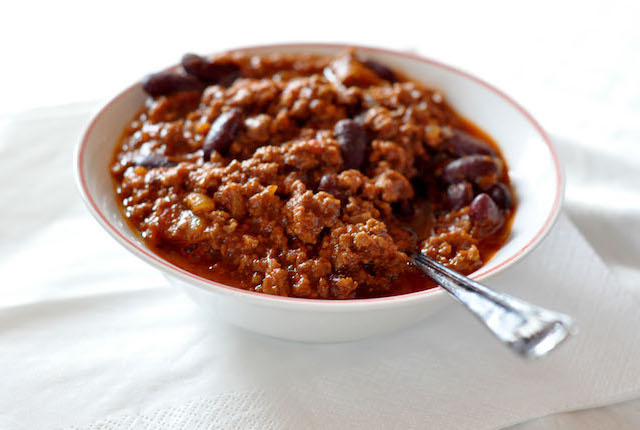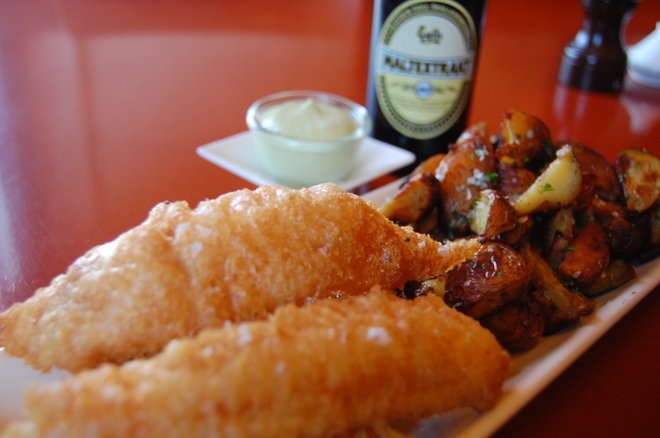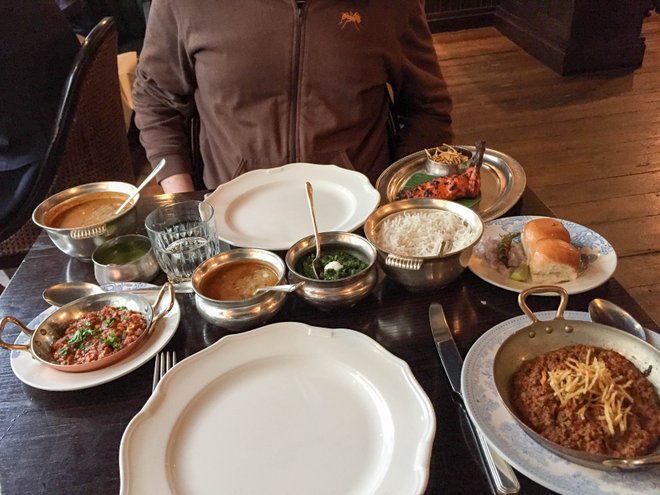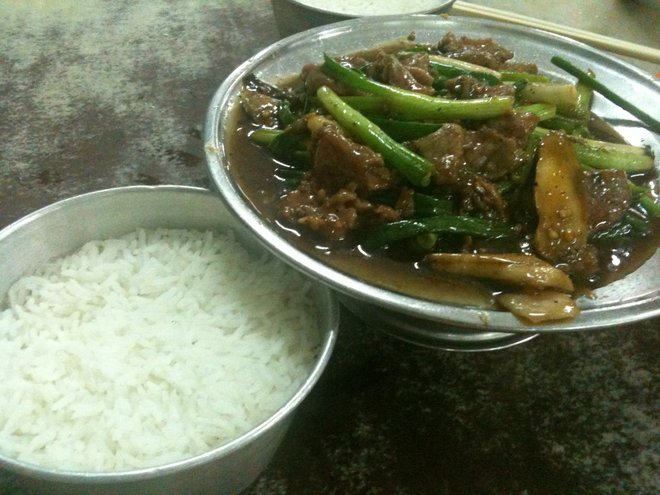Over 244 million people -- nearly three-and-a-half percent of the world’s population, live outside their home country. Those immigrants influence the world in numerous ways -- changing the languages we hear, the holidays we celebrate, and the food we eat. Speaking of the latter, many imported dishes have even become more popular as sequels than their original. Consider French fries and bagels. In the U.S. (and much of the world), they're more common than Belgian pomme frites and the Polish bajgiel. The question of which is better, however, is sure to spark an argument with any foodie. That being said, there are snacks, entrees, and desserts that have been tweaked by immigrants in ways that make them impressive in their own right. Here, we share a tasting menu of seven amazing gastronomic accomplishments that may just be as good as the original -- and perhaps even more memorable.
1. Tex-Mex
Photo courtesy of Flickr/cyclonebill
Originally used to describe the Texas Mexican Railway around 1875, the term Tex-Mex today describes a combination of Texan and Mexican cuisines. It was around that time that the “chili queens” of San Antonio were gaining a reputation for the cheap and delicious chili con carne they sold in city plazas. Their recipes were based on Tejano (or Texan) home cooking, which also includes staples such as steak fajitas, cheese enchiladas, and queso with chips. And while some gourmands view these dishes as watered-down Mexican food, others consider it a separate regional cuisine.
Rob Walsh, author of “The Tex-Mex Cookbook: A History in Recipes and Photos,” says Tex-Mex is American regional cuisine — not Mexican food — and we should stop “apologizing” for it. But is it better than authentic Mexican food? The debate still rages on, but let’s just say it’s 2 a.m. and you have a mound of Tex-Mex nachos slathered in cheese in front of you. Doesn’t sound too bad, huh?
2. Parisian Pastries
https://www.instagram.com/p/cvUvFcOQXd
French impressionist painters like Edgar Degas were known to be influenced by the exacting compositions of Japanese art. These days, pastry chefs in Tokyo study baking in Paris before returning home to adapt the techniques they’ve learned for Japanese palates. For example, chef Sadaharu Aoki has shops in both Paris and Tokyo where he sells items like the chocaron, a chocolate-dipped macaron with more cake and ganache filling. And his version of the chocolate croissant has cocoa flavors mixed into the pastry, which is slightly different than the traditional French croissant that’s filled with chocolate. Overall, Asian pastries tend to be lighter, incorporating different flours and less dairy than the typical Western treats.
3. Pizza
https://www.instagram.com/p/BHNqmc3AiWt
Naples, often celebrated as pizza’s birthplace, was founded as a Greek settlement around 600 B.C. Home to a working class population with little money and time, the low-cost, quickly-consumed meal was both convenient and popular. After Naples joined Italy, Queen Margherita visited the territory and became a huge fan of the cheese, tomato, and herb pie and eventually even lent it her name. Since then, Italians have migrated throughout Europe, South America, and North America. Of course, New York and Chicago are famous for their pies, but hardcore pizza fans also have a great appreciation for the New Haven version. Like many port cities in the U.S., New Haven had a large influx of Italian settlers and its pizza was made famous by joints like Frank Pepe Pizzeria Napoletana. Here, customers can expect pies with a thin crust that’s baked at a high temperature. Most pizzas have tomato sauce and Romano cheese — mozzarella is an extra topping. Turns out, the white clam pie was reportedly invented by Frank Pepe’s as well. But if you try and tell anyone from Italy, New York, or Chicago that New Haven pizza is better, you’re bound to start a heated debate.
4. Fish and Chips
Photo courtesy of Flickr/jayneandd
Fish and chips — the quasi-official meal of every pub — was actually brought to England by Spanish Jews who moved north in the 17th century. The original dish, called pescado frito, featured fish that was dipped in a batter of flour and water or beer. And although there were plenty of fried food stands around Europe at the time, an immigrant named Joseph Malin is credited with opening the first fish and chips stand in London around 1860. Today, there are over 11,000 fish and chip outlets in the U.K. plus plenty of locations in Spain, the U.S., and Hong Kong. One of the most impressive interpretations of the fast food, however, is made at Reykjavik’s Icelandic Fish & Chips restaurant. Here, chefs use a spelt batter and offer dips like tzatziki, mango, and truffle and tarragon.
5. Indian Curry
Photo courtesy of Flickr/Kent Wang
India has more than 50 different regional cuisines and many more subsets. During the years of the British Raj, which occurred from the mid-19th century to the first half of the 20th century, the English developed a taste for the spicy, complex flavors of the subcontinent. With more than 10,000 British curry houses today, many surveys herald chicken tikka masala as British folks’ favorite grub (particularly after a long night at the pub).
Tamarind, a London eatery helmed by self-taught chef Karam Sethi, even became the first Indian restaurant to be awarded a Michelin star. Sethi, who was born in London, visited India several times during his youth and fostered an appreciation for the rich textures of the cuisine. At his most recent London restaurant, Gymkhana, traditional dishes are given unique twists (think vindaloo made with pig cheeks and minced goat curry with an optional sauce of sautéed brains).
6. Chinese Food
Photo courtesy of Flickr/Paul Keller
Consider this: more Chinese people live outside mainland China than French people live in France. Plenty of these immigrants are found nearby in Vietnam, Hong Kong, and Cambodia as well as further away in Peru and Canada. Still, some of the best Chinese food can be found in Kuala Lumpur. In fact, some consider Sek Yuen in the city the best Chinese restaurant in the world. The eatery has been in the same building since it opened in 1948 and the chefs still use wood-fired ovens and old world techniques to cook traditional dishes like stir-fried shark fin and pei pa duck.
7. Hamburgers
https://www.instagram.com/p/BFpJIewHMcd
Some say the hamburger was originally influenced by the Hamburg steak. Today, the dish can be found everywhere, from upscale restaurants to fast food chains like McDonald’s and White Castle. For those who want something a little more distinctive than a sesame bun and meat, head to Santiago‘s La Burgueria. The restaurant arranges its patties into two categories: gourmet and American. While that division might seem like a burn on American tastes, Chileans are intrigued by the flavors that come from barbecue sauce and crisp bacon. More adventurous eaters can also try La Monumental, which features two beef burgers (think Big Mac-style) as well as refried beans, avocado, and a crunchy tostada.
WATCH: How Far $25 Goes for Dinner Around the World
https://www.youtube.com/watch?v=smwaFVov-VU
Related Stories:
- Oyster.com Editors Share the Best Thing They Ate While Traveling
- A Cheat Sheet to India’s Tastiest Street Food
- 9 Cities Around the World That Foodies Will Love
Pinterest image courtesy of Flickr/sakura_chihaya+
All products are independently selected by our writers and editors. If you buy something through our links, Oyster may earn an affiliate commission.



